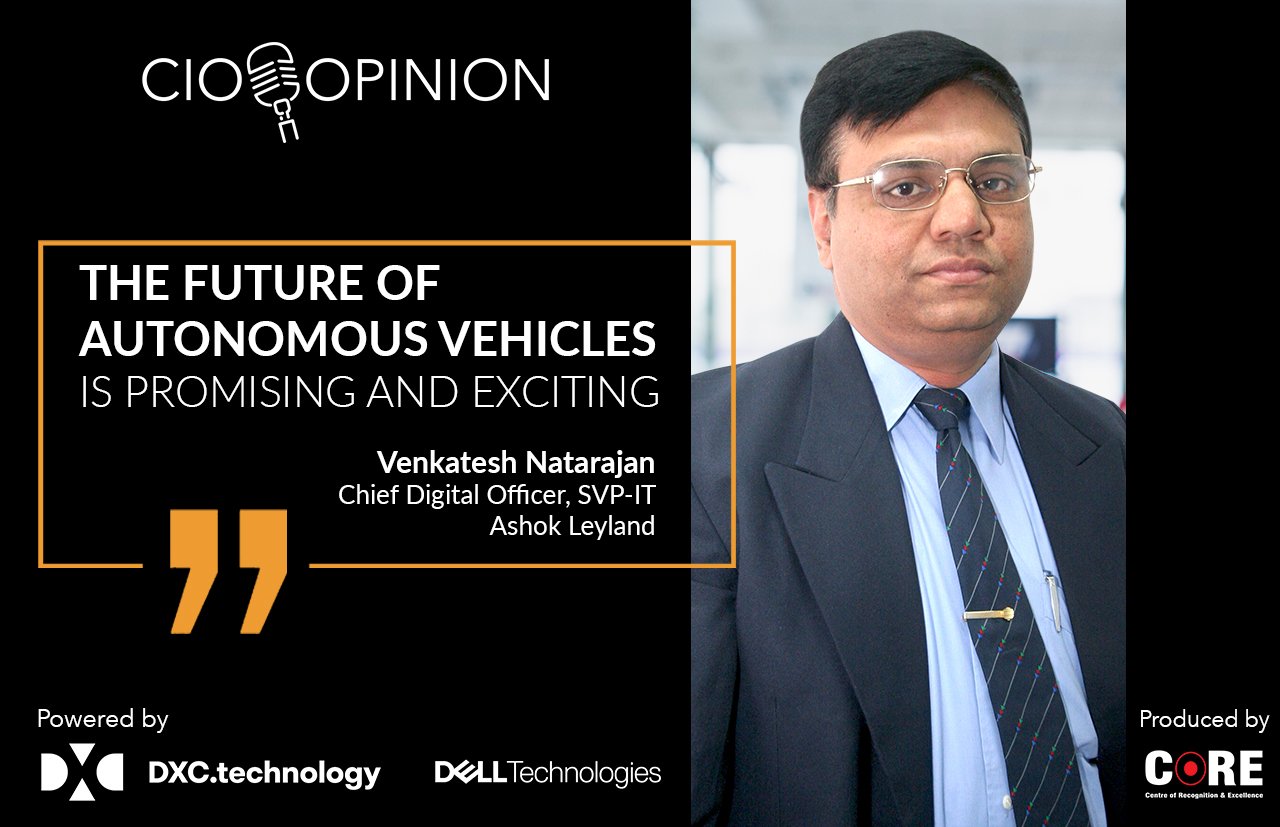Venkatesh Natarajan, Chief Digital Officer, SVP-IT, Ashok Leyland shares his insights on the next wave of evolution in the automobile industry and decodes how a heady mix of big data, AI, ML, and IoT will usher in the next era of autonomous vehicles.
The New Normal promotes a physically disconnected community, automakers are betting big on Connected Vehicle technologies to get their customer community into a Hyperconnected mode.
The automotive industry is on the cusp of major disruption. It has become a hotbed of innovation This big transformation has been heralded by the trend towards CASE- Connected Autonomous Shared Electric vehicle. As automakers try to adopt these megatrends for smarter, more intelligent, and sustainable mobility solutions, the Connected vehicle technology presents a plethora of opportunities for analyzing vehicle data.
This real-time, and often big data, provide valuable clues, analytical models, and patterns on the performance and health of the vehicle while monitoring service events, driver’s driving style, and notifications on his behavior. Analyzing the connected vehicle data can help provide a better driver experience by improving vehicle operation, reliability, and fuel efficiency.
Predictive and prescriptive analytics from connected vehicles can provide a differentiated experience to the end customer by fostering the creation of new business models. Using big data analytics, AI, and ML algorithms, we can build predictive capabilities to provide relevant, next-best-action to create custom and personalized experiences throughout the customer life cycle. It helps us achieve increased levels of customer affinity, loyalty, brand equity, and revenue growth.
The next big game changer that will stretch the contours of the automobile industry will surely be the adoption of autonomous vehicles.
It’s worth noting that you can’t have autonomous vehicles without the connected technology platform. The connected platform is the base for all the other trends like Autonomous Vehicles and shared mobility.
The journey towards fully autonomous vehicles has five milestones and is marked by different maturity levels of driver assistance technology. At stage one, the technology assists drivers with tasks like acceleration, braking, and monitoring the road. Stage two is characterized by partial automation where the vehicle can be assisted with steering or acceleration functions and the driver can disengage from certain tasks.
Stage three is marked by conditional automation through Advanced Driver Assisted Systems. There are alerts and alarms to give regular updates on lane changing and the surrounding environment on the road. The other key feature pertains to safety. Today, a lot of accidents occur because the driver gets drowsy. The Driver Drowsiness Detection System can study his eye /face movement and give an alarm. One can also set alarms in a way that the alerts go to the fleet manager. Thus these are like passive radar systems.
At Stage Four, there is high automation with the use of active safety systems. Under this system, if the driver is feeling drowsy the vehicle will gradually come to a halt. If the driver is under the influence of alcohol then a sensor will detect it and the engine will not start.
Stage Five of autonomous driving does not require any human attention. The fully automated vehicle can perform all functions without manual intervention. So pedals, brakes, and a steering wheel are technology operated. The autonomous vehicle system also controls the monitoring of the environment and identification of road conditions like traffic jams.
While the future of autonomous vehicles is promising and exciting, mainstream production in the U.S. is still a few years away from anything higher than Stage 2. Not because of technological capability, but because of security—or the lack thereof.
The government will bring in regulations for different levels of ADAS systems. Once the customers start to see safety as critical to their business and the ecosystem, then these technologies will be welcomed and embraced.
Today, we are building a computer on top of vehicles, but in the era of AV, we will be building vehicles on top of computers.
To know more.


